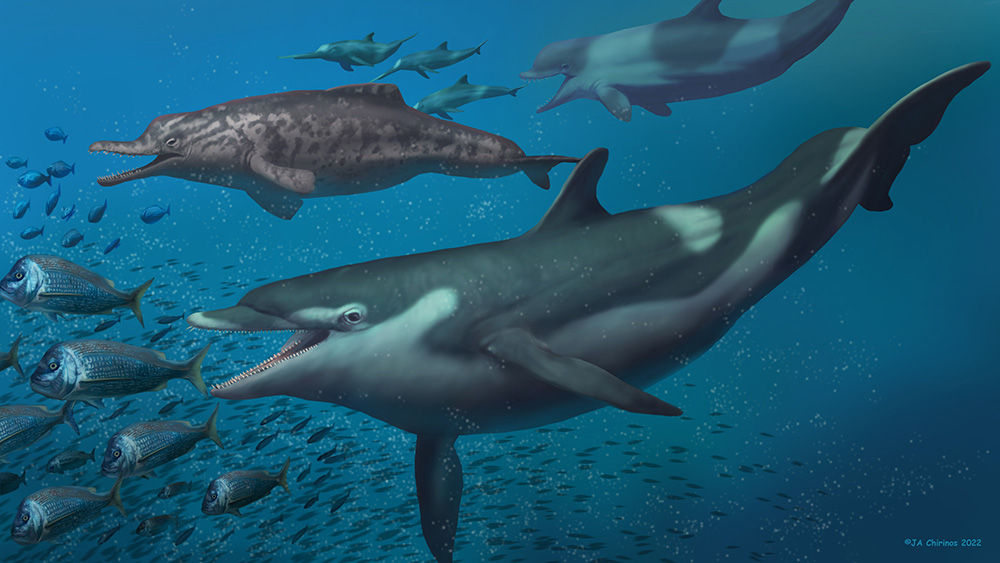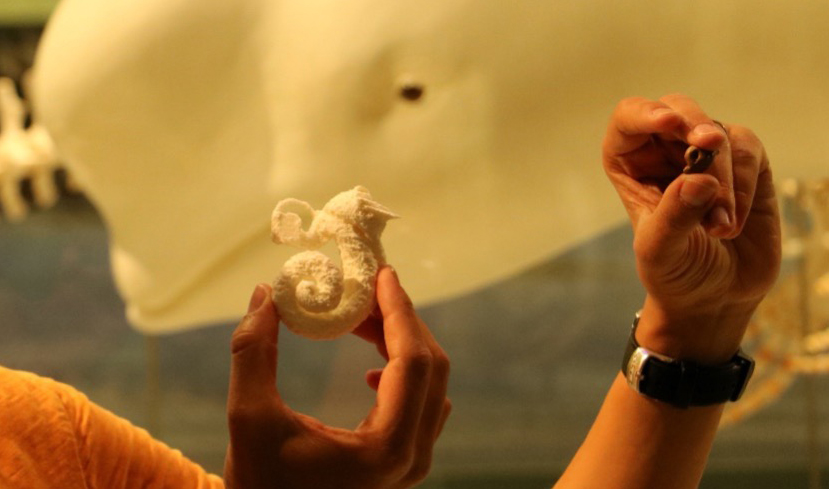Navigation auf uzh.ch
Navigation auf uzh.ch

About 20 million years ago, as the climate became warmer and warmer, sea levels rose and flooded the low-lying areas of Europe. Switzerland at that time was part of an island landscape populated by fish, sharks and dolphins, with mussels and sea urchins on the seabed.
Paleontologists at the University of Zurich have now examined around 300 fossils of whales and dolphins dating from this period. The major natural history and paleontology collections in Switzerland mostly contain fragments of teeth, vertebrae and ear bones that were found in the Upper Marine Molasse, indicating that strong currents dragged the animal skeletons across the ocean floor and scattered the bones.
For research purposes, the most interesting remains are the bones from the inner ear, as they allow individual species to be classified. The problem is that these types of bones are less commonly found. “Nevertheless, we managed to identify two families of dolphins previously unknown in Switzerland,” says paleontologist Gabriel Aguirre, summarizing the study results.
Thanks to micro-computed tomography, the researchers were able to reconstruct the softer organs around the hard ear bones to create 3D models of the ears. “This helped us better analyze the dolphins’ hearing ability,” Aguirre explains. According to the study data, the extinct animals are related to the sperm whales and oceanic dolphins living today.
Gabriel Aguirre-Fernández, Jürg Jost and Sarah Hilfiker. First records of extinct kentriodontid and squalodelphinid dolphins from the Upper Marine Molasse (Burdigalian age) of Switzerland and a reappraisal of the Swiss cetacean fauna. PeerJ, 16 Mai 2022. Doi: 10.7717/peerj.13251
